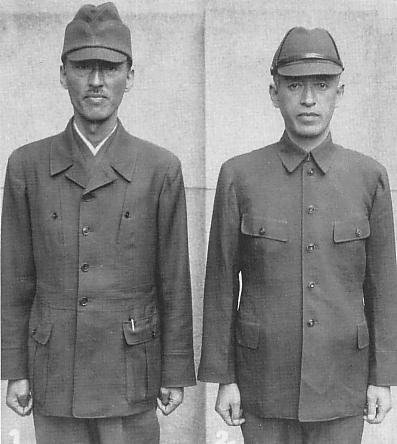Soviet Assault On Maoka on:
[Wikipedia]
[Google]
[Amazon]
The Soviet assault on Maoka (Maoka Landing, ) was carried out at the port of Maoka (now Kholmsk), Southern Sakhalin during August 19-22, 1945, by the forces of the Soviet Northern Pacific Flotilla of the Pacific Fleet during the South Sakhalin Offensive of the Soviet–Japanese War at the end of
in: Захаров, С. Е., Багров В. Н., Бевз С. С., Захаров М. Н., Котухов М. П. "Краснознаменный Тихоокеанский флот", Moscow, After the success of the assault, during August 22-24 Soviet reinforcements arrived from
After the success of the assault, during August 22-24 Soviet reinforcements arrived from
p 293
/ref> According to refugees already evacuated from the area, Soviet forces carried out fierce naval bombardment and artillery strikes against Japanese installations in Maoka, Shikuka and civilians who were awaiting evacuation. Nearly 1,000 civilians were killed in this attack. Witnesses reported that to a high level of fatalities among civilians were caused by the confusion of European-style '' kokumin-fuku'', men's approved civil attire, with military uniforms.中山隆志 『一九四五年夏 最後の日ソ戦』 中央公論新社〈中公文庫〉、2001年。 (Takashi Nakayama, "Last day of summer 1945 Soviet war", Chuko Bunko , 2001, ), pp. 158-159. A number of telephone operators of the city post office pledged not to evacuate and maintained contact with the city of Wakkanai on
World War II
World War II or the Second World War (1 September 1939 – 2 September 1945) was a World war, global conflict between two coalitions: the Allies of World War II, Allies and the Axis powers. World War II by country, Nearly all of the wo ...
. It was the second amphibious assault on South Sakhalin, after the (now Shakhtyorsk) on August 16.
Assault
Japanese forces in the port and the city had two battalions of infantry, artillery and mortar units, and coast guard. All of them were subordinate to the commander of the 88th Infantry Division of the Fifth Area Army. After a Soviet submarine and aviation reconnaissance on August 17, on August 19 an amphibious force of the 113th Rifle Brigade and a battalion of marines of total force of 3,400 moved out from Sovetskaya Gavan and landed at Maoka early morning on August 20. Due to heavy fog, there was no aviation support, and instead the city was subject to heavy artillery bombardment from ships. Due to initial surprise, the coastal facilities were quickly occupied, but later the Soviet troops, according to the Soviet sources, were met with fierce Japanese resistance.Chapter 13, "Освобождение Южного Сахалина"in: Захаров, С. Е., Багров В. Н., Бевз С. С., Захаров М. Н., Котухов М. П. "Краснознаменный Тихоокеанский флот", Moscow,
Voenizdat
Voenizdat () was a publishing house in Moscow, Russia that was one of the first and largest publishing houses in USSR. The name is a Russian abbreviation for Voennoe Izdatelstvo (), meaning "Military Publishing House".
Voenizdat was establi ...
, 1973 However the Japanese side states that their military tried to avoid engagement keeping defensive positions, busy with evacuation of equipment (described as "looting the city" in some Soviet sources ) and guiding the evacuation of about 18,000 civilians.
Vladivostok
Vladivostok ( ; , ) is the largest city and the administrative center of Primorsky Krai and the capital of the Far Eastern Federal District of Russia. It is located around the Zolotoy Rog, Golden Horn Bay on the Sea of Japan, covering an area o ...
and proceeded to clear the Japanese forces from South Sakhalin. David Glantz, ''The Soviet Strategic Offensive in Manchuria, 1945: 'August Stormp 293
/ref> According to refugees already evacuated from the area, Soviet forces carried out fierce naval bombardment and artillery strikes against Japanese installations in Maoka, Shikuka and civilians who were awaiting evacuation. Nearly 1,000 civilians were killed in this attack. Witnesses reported that to a high level of fatalities among civilians were caused by the confusion of European-style '' kokumin-fuku'', men's approved civil attire, with military uniforms.中山隆志 『一九四五年夏 最後の日ソ戦』 中央公論新社〈中公文庫〉、2001年。 (Takashi Nakayama, "Last day of summer 1945 Soviet war", Chuko Bunko , 2001, ), pp. 158-159. A number of telephone operators of the city post office pledged not to evacuate and maintained contact with the city of Wakkanai on
Hokkaido
is the list of islands of Japan by area, second-largest island of Japan and comprises the largest and northernmost prefectures of Japan, prefecture, making up its own list of regions of Japan, region. The Tsugaru Strait separates Hokkaidō fr ...
, as well as mainland Japan, until the moment that Soviet forces destroyed the telephone and postal installations in the city. On August 20, fearing that they would be raped by the invading Soviet troops, nine of the twelve female operators poisoned themselves. Three were saved by male colleagues' intervention. The survivors at the post office were treated well by the Soviets. In Japan it is known as the . The city of Wakkanai has a memorial to these post office operators.
On August 21 the weather permitted the operation of aviation, nevertheless the Japanese continued the resistance following the order to cover the evacuation.
In popular culture
* '' Karafuto 1945 Summer Hyosetsu no Mon'' * '' Kiri no Hi''References
{{reflist Pacific War Battles of World War II involving Japan Battles involving the Soviet Union Japan–Soviet Union relations Karafuto 1945 in Japan 1945 in the Soviet Union Conflicts in 1945 Mass murder in 1945 August 1945 in Asia